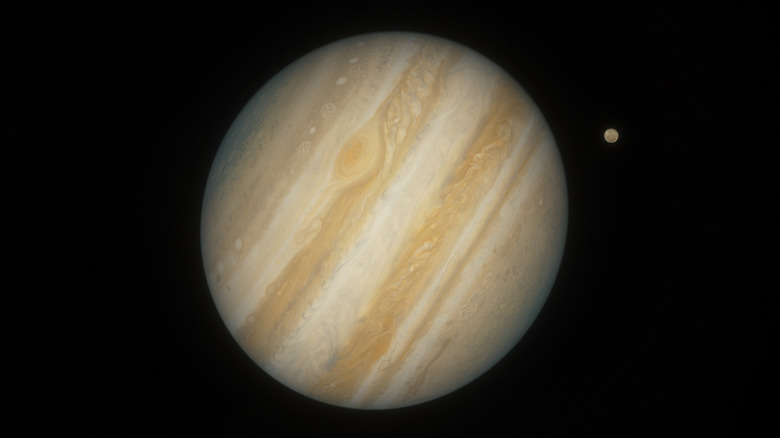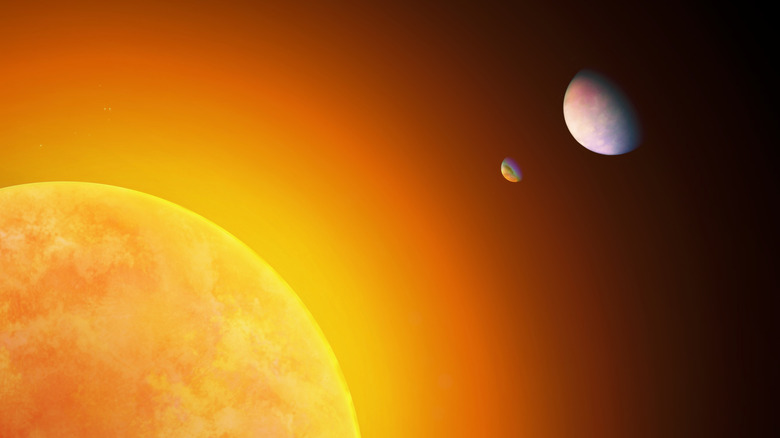Why We Haven't Found A Planet More Than 14 Times The Mass Of Jupiter
In our solar system, Jupiter is the biggest planet at 88,846 miles in equatorial diameter — the distance through the planet from one side to the other at its equator — and a mass of 1,898 × 10^24 kg. By comparison, Earth's diameter is about 7,926 miles, and its mass is 5.97 × 10^24 kg, which means that the gas planet is nearly 318 times heavier. Jupiter was the largest planet that astronomers discovered until they looked beyond our solar system in 1992 and found worlds that make it look tiny. So, if there are even bigger planets in the universe, is there a limit to how large they can get?
The short answer is yes because planets can become different kinds of celestial objects if they take on enough mass. For instance, once an object's mass reaches more than 13 times that of Jupiter, it turns into a sub-stellar object known as a brown dwarf. Also called a failed star, the object is between a star and a planet because it doesn't go through the nuclear fusion process, during which hydrogen turns into helium in the planet's core, creating heat and pressure that transforms it into a star. Instead, this happens when an object's mass reaches beyond 80 times that of Jupiter. The enormous amount of mass is why a star can never be smaller than a planet and why the sun and moon can't be planets.
The biggest planets in the universe
What's considered the largest planet in the universe depends on which measurement is considered, so we'll look at a few. With a diameter about twice that of Jupiter, HAT-P-67 b is the widest planet that astronomers have discovered so far. It was found in 2017 at about 1,212 light-years from Earth, but its mass is only about 33% that of our gas giant. Other planets that are around the same size are WASP-17 b at 1,324 light-years away and KELT-9b at 667 light-years away.
On the other end of the spectrum, HD 39091 b is the heaviest planet that researchers have discovered so far at 12.3 times the mass of Jupiter. They found it in 2001 just 60 light-years from Earth, but its diameter is about the same as our gas giant. Other planets that are much heavier than Jupiter are HD 106906 b at 11 times the mass and 336 light-years away and ROXs 42B b at nine times the mass and 468 light-years away.
Meanwhile, astronomers have discovered some pretty massive brown dwarfs in the universe. The largest and most pure so far is SDSS J0104+1535, which was found in 1992 about 750 light-years from Earth. It was believed to be a cool star until new readings published in 2017 identified it as a brown dwarf that is 90 times heavier than Jupiter. Additionally, the sub-stellar object is almost totally made of helium and hydrogen, which is 250 times as pure as our star, the Sun.

